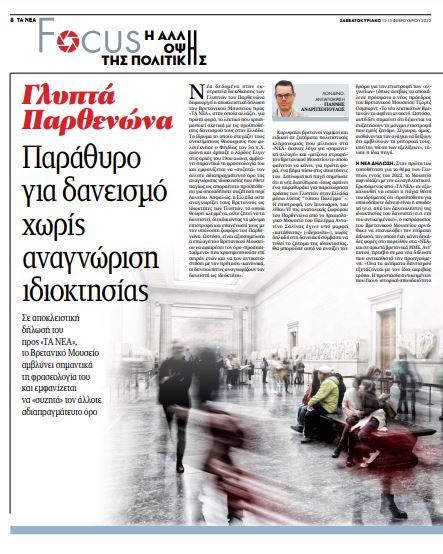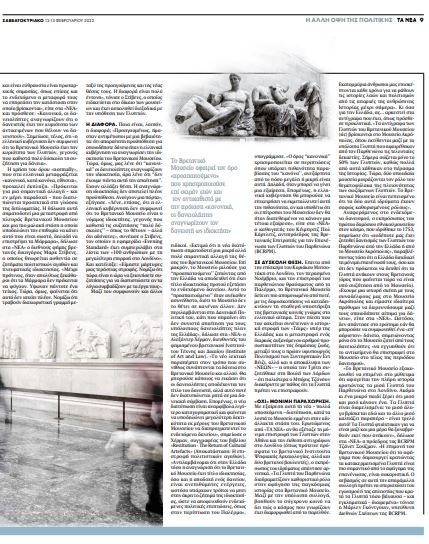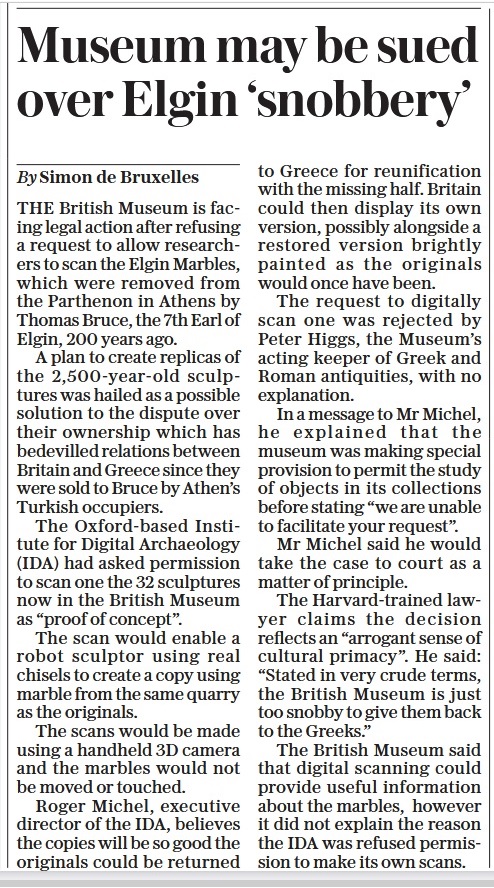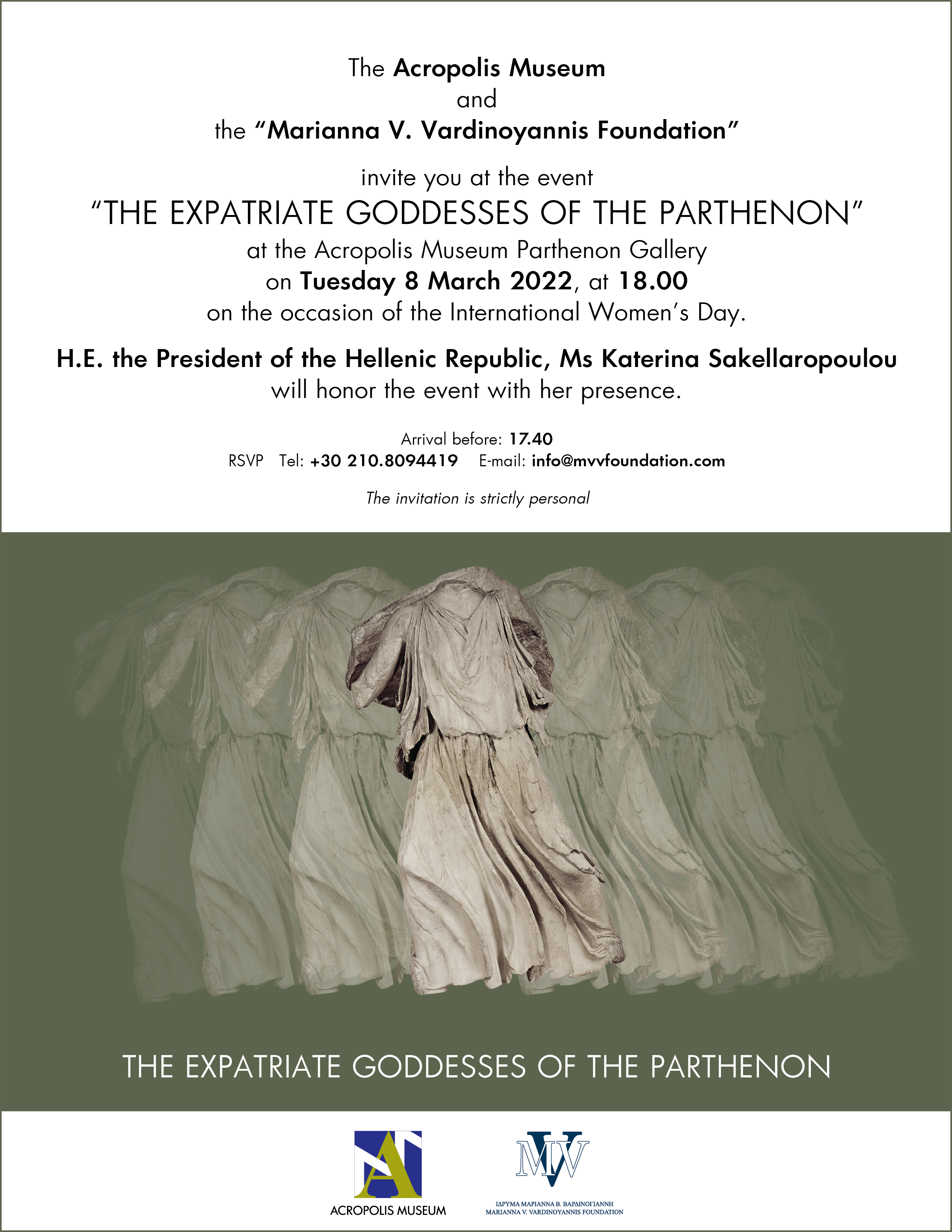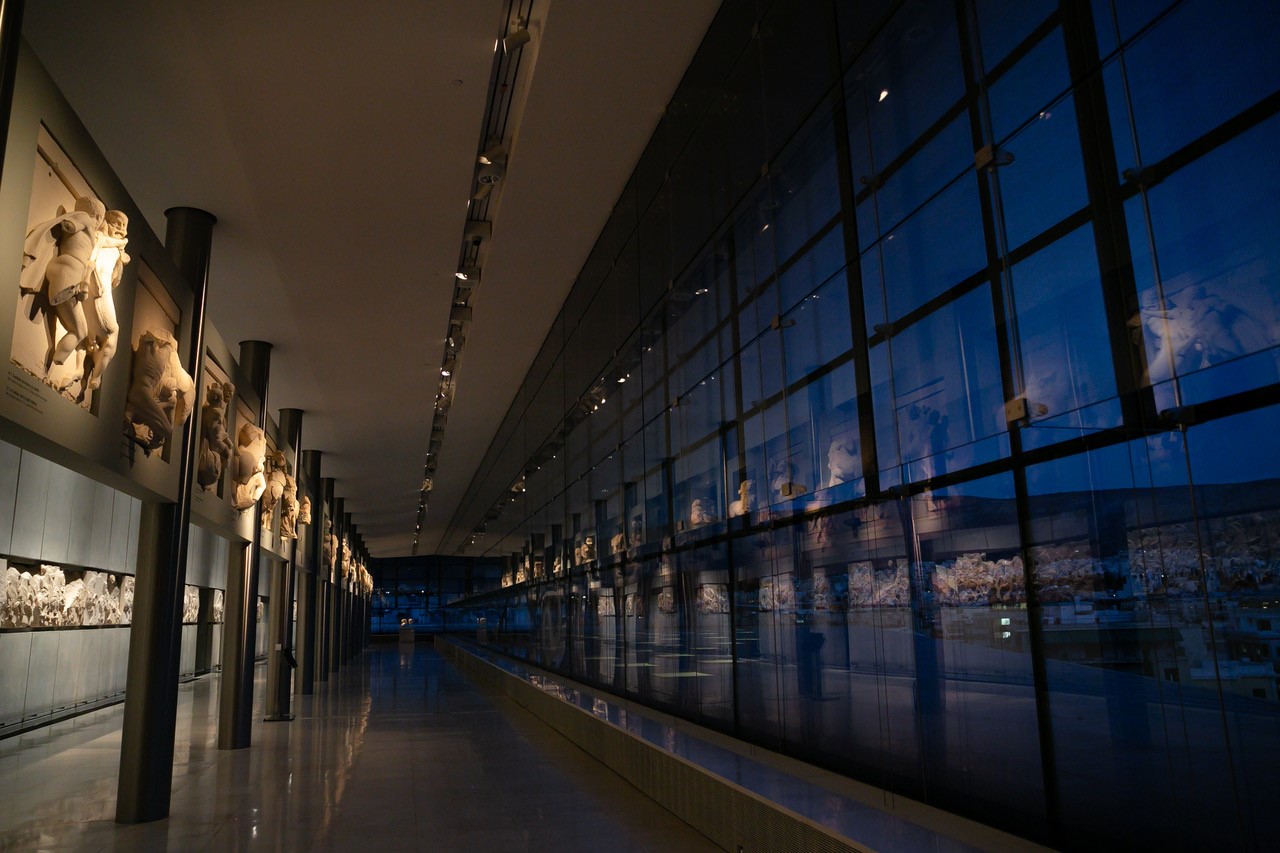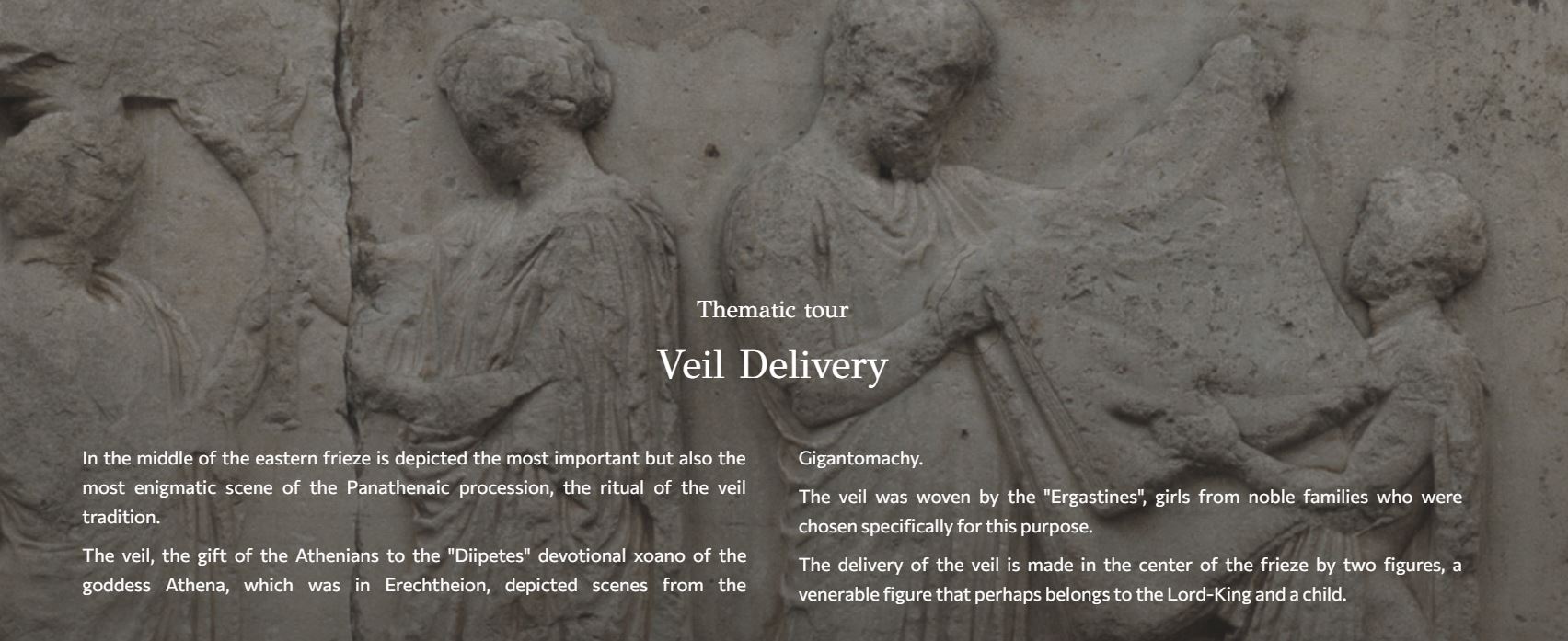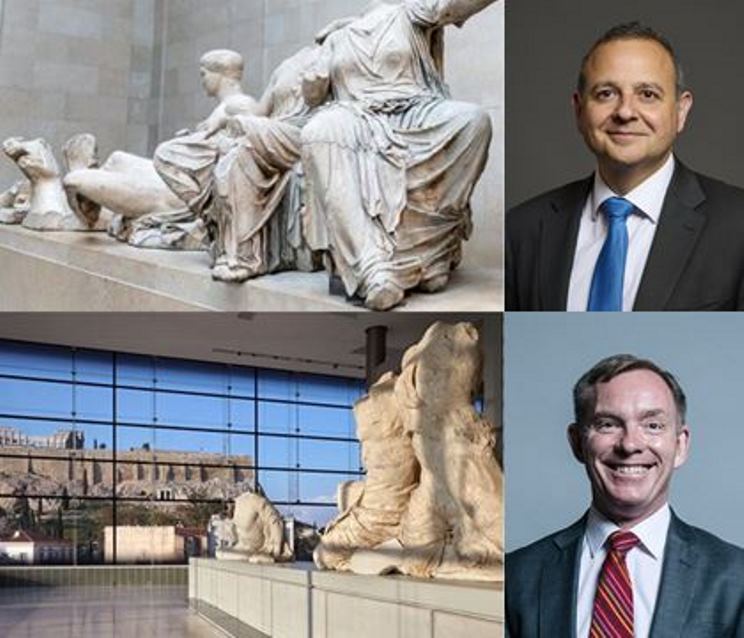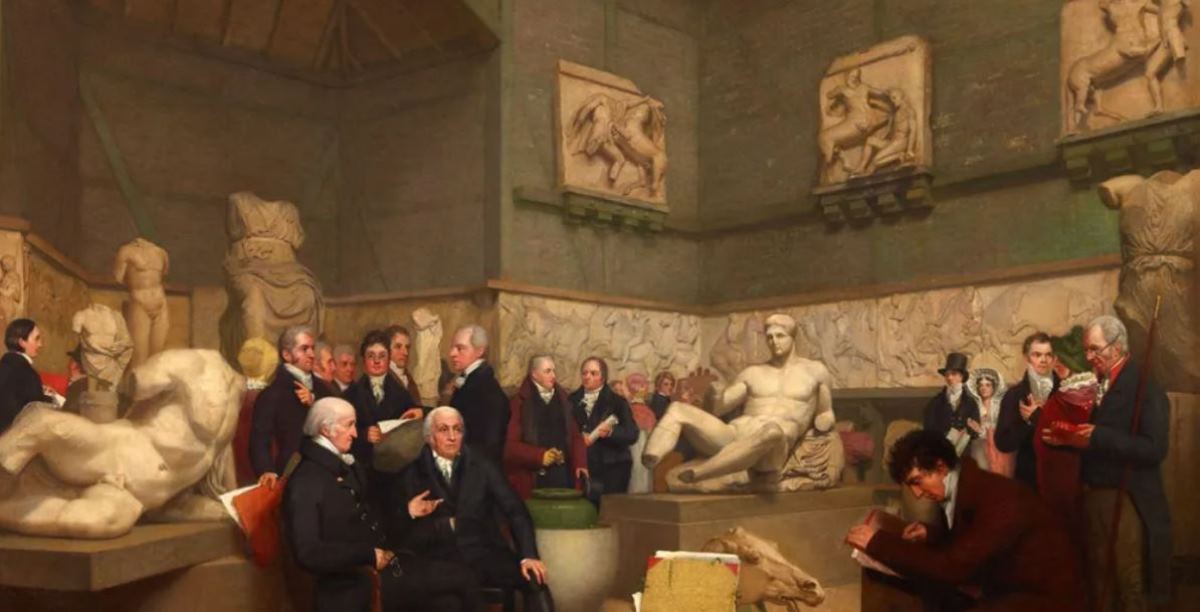An exclusive by UK Correspondent Yannis Andritsopoulos in Ta Nea.
Experts believe that the British Museum has made a “massive shift” in its policy regarding the loaning of the Parthenon Marbles to Greece, possibly opening the way for the first constructive discussions on the artefacts’ return after decades of dead-ends.
In what appears to be a softening of its earlier stance, a museum spokesperson told Greek daily newspaper Ta Nea that borrowers “normally” acknowledge that the lender has title to the objects they want to borrow.
This is significant because until now, the museum has insisted that the acceptance of the lending institution’s ownership is a “precondition” for any loan.
However, when questioned by Ta Nea, the museum’s spokesperson stopped short of reiterating the word “precondition”, used by the museum for many years, repeatedly nixing the concerted campaign for the Marbles’ return Greece has been carrying out since the 1980s. Instead, the spokesperson replaced “precondition” with the word “normally”.
Experts in art and museum law and cultural heritage, British campaigners and Greek officials said that the new language marks an “important shift” and indicates that the museum is taking a step back by demonstrating a “greater openness” towards negotiating a possible loan with Greece.
Successive Greek governments have rejected offers from the British Museum to discuss the possibility of returning the 2,500-year-old sculptures on loan, arguing that it would mean renouncing any Greek claim to Phidias’s masterpieces, which have been in London for more than two centuries.
The British Museum claims to have legal title to the fifth-century B.C. antiquities. Greece, however, insists that the museum possesses the sculptures illegally and has been demanding their permanent reunification with the rest of the Parthenon frieze.
The apparent softening of the museum’s wording made some experts and lawyers think that the UK might be open for discussion about a loan without the once non-negotiable precondition of acknowledging ownership.
The museum has always said in written statements that “a pre-condition for any loan is the acceptance of the lending institution’s ownership”.
Last week, however, a British Museum spokesperson told Ta Nea that the borrowing institution “normally” acknowledges the museum’s ownership of the object they wish to borrow.
Asked three times whether it still stands by its previous statement, the spokesperson declined to answer.
“All loan requests are considered in exactly the same way. Of primary importance is the conservation of historical significant and delicate objects and whether travel would impact on their condition,” the museum said in a written statement.
“Borrowers also normally acknowledge that the lender has title to the objects they want to borrow. The Greek government doesn’t agree that the British Museum has title to the Sculptures which makes discussion of loans very difficult,” the spokesperson added.
‘Major shift’
“This is a major shift – and an admission in part – in the carefully calibrated language of diplomacy,” leading cultural property lawyer Mark Stephens told Ta Nea.
“This marks a changing of the guard at the British Museum and a softening of their stance, indicating a desire to do the ‘right thing’: return the marbles,” he added.
Stephens, an expert on museum, art, and cultural heritage law, explained that “previously, the museum had been very clear about not allowing the Marbles to go; it was always a complete blockage. But now it appears that that's no longer the case. I think they're drawing the distinction between their own previous position and the current one”.
He said: “they’re saying that loan requests are considered in light of three subjects: Historical significance, delicacy and whether they would be damaged in transit. Obviously, the Acropolis Museum in Athens meets those three criteria.”
“Previously, there was a certainty; that a precondition for a loan was that the Greek government had to acknowledge the British Museum's ownership. Now, they're saying that borrowers also ‘normally’ acknowledge ownership, so they’re saying ‘we don't always require this’. They're not saying that it is a precondition anymore. So, what you are seeing is a massive shift. They're opening the door,” said Stephens, who has been twice listed among the “100 most influential people in London” by the Evening Standard newspaper.
“They also say that the Greek government doesn't agree that the British Museum is the legal owner, which makes discussions of loans ‘very difficult’, but not impossible”, he added.
“I think there is a difference here, and I think it's a very marked difference. And so I think now is the time to begin the discussion and see if they're as good as their word,” Stephens said.
A Greek official noted that the new wording "potentially gives some leeway as to how the two parties could negotiate the reunification of the Sculptures through a Palermo-style solution".
Last month, a marble fragment that once adorned the Parthenon was returned to the Acropolis Museum in Athens. Stone VI on the eastern frieze of the Parthenon was previously held by the Antonino Salinas Regional Archeological Museum in Palermo, Italy. According to the Greek government, the fragment was returned as a “long-term deposit (‘deposito’)”, which means that ownership was not mentioned in the agreement.
‘Greater openness’
“I think (the new language) marks a slight but very important shift in the British Museum's position,” Alexander Herman, Director of the UK-based Institute of Art and Law and author of the recent book Restitution - The Return of Cultural Artefacts told Ta Nea.
“For a long time, the British Museum referred to the 'pre-condition' that Greece accept the Trustees’ title before a loan could be considered. This pre-condition was always unusual, since nowhere else was it required by the British Museum: it isn't referred to in the British Museum's Loans Policy, meaning that it would not have been a requirement for borrowers other than Greece,” he said.
According to Herman, “the new language is more in keeping with how loans usually work at the British Museum and elsewhere. It might be assumed that borrowers will accept a lender's title (otherwise why would they borrow?), but one never sees this expressly worded in a loan agreement.”
“In fact, in most cases one sees the opposite: lenders warrant that they have title to borrowers, since borrowers usually need assurances to avoid the risk of third-party claims during the course of an exhibition.”
He said: “So the new wording is certainly less categorical and appears to indicate a greater openness on the part of the British Museum to negotiate around the possibility of a loan. This is sensible. In Chapter 2 of my book, I show an example of a long-term loan secured by a Canadian First Nations group from the British Museum in 2005 that is still in place today. So there is precedent, even though it might only relate to a single object.”
“I realise that in Greece the idea of recognising the British Museum's title and of accepting a loan are unwelcome, but as I wrote in The Art Newspaper in 2019 there are ways of putting title aside, so as to avoid any political fallout. And a loan was acceptable in the case of the Artemis foot from Palermo, so there appears to at least be some tolerance for the L-word in Greece,” Herman concluded.
“‘Normally’ is always put into such statements in cases where there's a (no matter how remote) possibility of the 'norm' being violated, i.e. an exception to it being made. Therefore, the Greek Government could seek to take advantage of the possibility of an exception. But I would guess that the British Museum’s Trustees would not be willing to make an exception in such a case as the Marbles and moreover in favour of another state's Government,” Paul Cartledge, A.G. Leventis Professor of Greek Culture emeritus at the University of Cambridge and Vice-Chair of the British Committee for the Reunification of the Parthenon Marbles (BCRPM), told Ta Nea.
Growing pressure
Several recent repatriations of artefacts whose ownership has been in question has led to pressure being ratcheted up on the British Museum to follow suit.
The Parthenon Sculptures are regarded as some of the finest ever works of art and a symbol of the birth of Western civilisation. The campaign for their return was boosted by the recent about-turn by The Times, which argued for the ancient treasures to be returned to Greece. The newspaper had maintained for more than 50 years that the marbles should remain in the UK.
Ed Vaizey, who served as Culture minister under David Cameron, has also said that the Marbles should go back to Greece. In repeated polls, Britons have voiced support for the repatriation of the carvings.
Boris Johnson, the British Prime Minister, has been accused of hypocrisy after Ta Nea unearthed a 1986 article in which he accused Lord Elgin of “wholesale pillage” of the Parthenon and urged the British government to return the artefacts to Greece in a complete reversal of the position he now holds.
In an exclusive interview with Ta Nea published in March 2021, Johnson claimed that the Parthenon Marbles “were legally acquired by Lord Elgin under the appropriate laws of the time and have been legally owned by the British Museum’s Trustees since their acquisition.”
Asked if it would consider returning the Parthenon Marbles to Athens permanently and displaying identical copies in London (as was recently suggested by the Oxford-based Institute for Digital Archaeology and by two members of the House of Lords), the British Museum’s spokesperson told Ta Nea:
“The Parthenon Sculptures play a pivotal role in telling a world story at the British Museum. Together with the wider collection, they help modern-day audiences see how the world they know is shaped by the past. Millions of people visit each year to learn the stories of people and cultures from the earliest moments of human history to the present day”.
“There are replicas of the British Museum’s Sculptures in the Acropolis Museum, where they are displayed alongside the remaining sculptures removed from the Parthenon during the past few decades,” the spokesperson added.
“The British Museum’s purpose is to prompt debate, thought, understanding and learning. Only 50% of the Parthenon sculptures survive today, with much lost to history. Now two great museums share custodianship of the majority of the surviving sculptures. The British Museum is confident that these two institutions have well-defined roles.”
Asked about the possibility of a loan, the museum’s spokesperson said: “We have never been asked for a loan of the Parthenon sculptures by Greece or the Acropolis Museum. We have a strong relationship with colleagues at the Acropolis Museum and are very willing to explore any requests for a loan with them.
“We lend objects from the collection to countries all over the world. We believe in the importance of lending our collection, it strengthens the stories the collection tells and when displayed alongside other objects, they create new stories and conversations. In 2014 the museum lent one of the Parthenon sculptures to the State Hermitage Museum in St Petersburg, Russia, on the anniversary of that museum's foundation.”
However, the museum did not respond when asked whether an ‘indefinite’ loan could be agreed upon.
Instead, it said that “the British Museum will lend only in circumstances when the borrower guarantees that the object will be returned to the museum at the end of the loan period (the Trustees will normally expect the borrower to provide assurance of immunity from judicial seizure or comparable assurance from a government body or representative of appropriate authority).”
“The British Museum is not changing its tune as it still persists in the myth that a full story is being told by keeping half the figures taken from the Parthenon in London while the other half is shown in Athens which is so obviously a concocted story. Try telling it to a child whose natural logic will instantly spy the hole in the argument; they know perfectly well that half and half makes a whole,” Dame Janet Suzman, Chair of the British Committee for the Reunification of the Parthenon Marbles, told Ta Nea.
“The Marbles were made to be together and one day they will be where they belong. The same goes for all the disfigured reliefs, with half a horse here and the other half galloping over there, it’s crazy! The Fat Lady of Bloomsbury is still singing her old song, silly old thing, but the world is already tiring of it,” she added.
“The change in the wording from the British Museum has been noted. We sincerely hope this means a change of heart. Greece has been doing an exemplary job of conserving its ancient monuments on the Acropolis and in the Acropolis Museum. The primary historically significant story of the sculptures is that which they tell as one and in reference to the Parthenon, which still stands,” commented BCRPM's Marlen Godwin.
“The British Museum’s insistence that the narratives it creates with the fragmented sculptures it holds is of greater importance, is out of step with the changes that are already happening. Respect for such a peerless collection should trump any selfish need or greed to keep the sculptures so brutally (and criminally) divided. These sculptures belong to the Parthenon and that is still, firmly on Greek soil. Today’s inequalities of the past, such as the continued division of the sculptures isn’t going to erase the sublime display they command in Athens nor the understanding they provide to visitors. Here’s to the bright, best practice museum curators that are getting it right,” she added.
This news report was published in the Greek daily newspaper Ta Nea on 12 February 2022. To read it in Greek follow the link here or follow the link for the English version.
